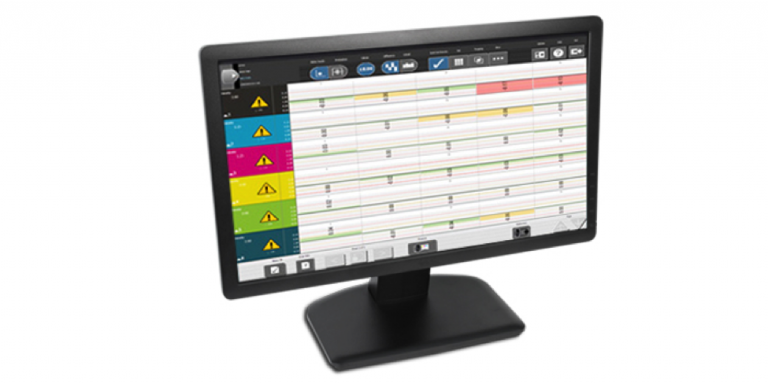The flexography method of printing uses rotary flexible plates to print directly on the substrate in a single pass. These inked plates are wrapped around cylinders on a web press and rotate at a fast speed to transfer ink. This type of printing is ideal for large quantities and long print runs with a continuous print, such as wallpaper and gift wrap.
A flexographic printing press can use a variety of solvent-based, water-based, or UV curable inks. It also adapts well to different materials and can print high quality color on envelopes, foils, self-adhesive labels, cut and stack labels, cartons, printing labels, cellophane, metallic films, fabric, corrugated board, cardboard, food packaging, plastic bags, sleeves, and more.

Establishing Flexo Process Control
To achieve predictable, repeatable color on a flexo press, you need good color management and process control or hitting colors is just luck. Although it may take a little effort to set up, it’s worth it. Your customers will be more satisfied, and you’ll save time and money through faster make-ready time and fewer reprints.
Learn how to set up flexo process control.
Tolerancing in Flexo Printing
Density only tells us one thing about a color – how light or dark it is. To compare and communicate accurate color in print and packaging, you also need to measure hue and saturation to achieve high-quality prints.
This blog introduces at the two most commonly used color models and the tolerancing methods to describe color difference.ISO Standards for Flexographic Printing

The International Standards Organization has defined ISO 12647 as a set of Graphic Arts standards for printing in eight parts. Different parts of the world interpret these standards into their own specifications. Take a closer look how ISO 12647-6 is utilized in flexographic printing applications.
Troubleshooting Color on Press
Every year flexo and gravure printing operations waste ink, substrate and press time trying to get color right. Although advancements in technology have made it easier to achieve color accuracy, the variables that affect color still exist. Achieving accurate color in flexo and gravure printing is a delicate balance between the spectrophotometer, ink, substrate, press, and the environment. If your color just isn’t right, try checking these areas first.
Part One: Instrumentation

To print accurate color, you need the right instrument for the job. This blog covers key topics related to instrumentation, including:
- The best type of spectrophotometer for printing on different substrates
- Calibration and caring for your device
- Choosing the right illuminant, filter, and Delta E calculation
- Using the right backing
- Setting up standard operating procedures
Part Two: Ink and Standards

Many factors related to ink and standards can make or break your print color program, including:
- The color standard
- The number of colorants
- The type of substrate
- Overprint varnish
- Ink contamination and opacities
- Improper drying
Read this blog to understand the variables to achieve on-spec color.
Part Three: Environment
Many environmental and press issues can affect final color, including:
- Temperature and humidity
- Solvent pH too high or low
- Anilox roll or gravure cylinder needs adjustment
- Dirty or plugged anilox rollers
- High or low ink viscosity
- Impression cylinder to strong or light
- Dot gain and density
- Old plate cylinder, blanket durometer, or doctor blade
- Worn plate backing material
Read the full blog to learn more.
Achieving Flexo Process Control
If you've tried everything but are still struggling to achieve accurate color on your flexo press, get in touch. Our color experts are available to help you troubleshoot issues and establish a print control program you can trust.
